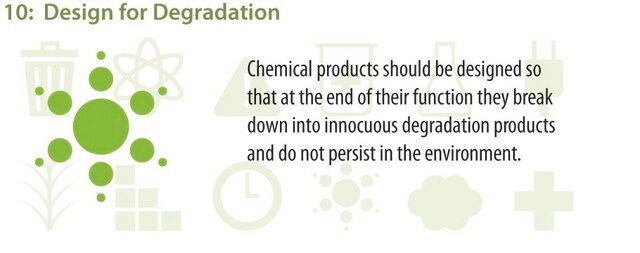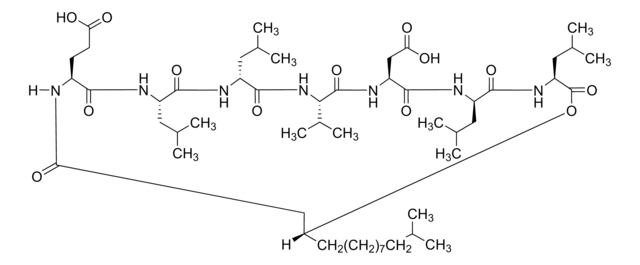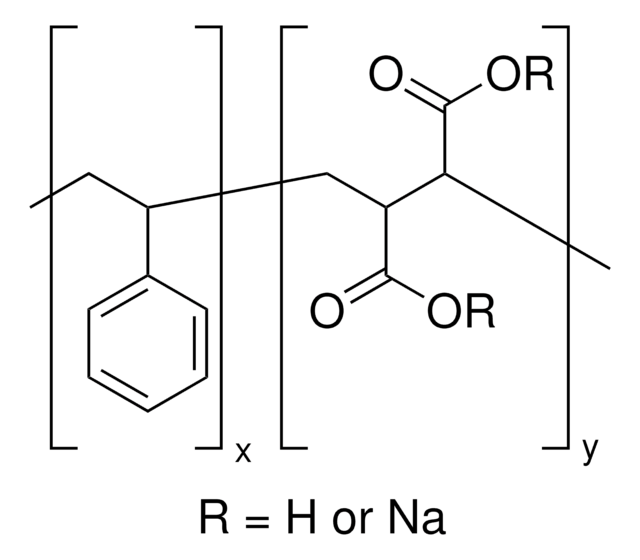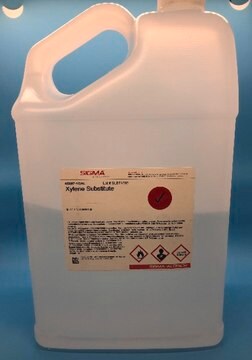R95M90
Rhamnolipids, 95% (90% Mono-Rhamnolipid)
Synonym(s):
Rhamnolipids
Sign Into View Organizational & Contract Pricing
All Photos(1)
About This Item
UNSPSC Code:
12352200
NACRES:
NA.22
Recommended Products
biological source
Pseudomonas aeruginosa
form
solid/granular
shipped in
ambient
storage temp.
room temp
Looking for similar products? Visit Product Comparison Guide
General description
Rhamnolipid biosurfactants are glycolipids containing L-rhamnose and ß-hydroxyl fatty acids, with amphiphilic properties (both hydrophilic and hydrophobic). This rhamnolipid product has been purified from Pseudomonas aeruginosa and contains a mixture of rhamnolipids with fatty acids of varying tail length. They are highly biodegradable, non-toxic, and renewable. Functional roles include bioactive, surfactant and emulsifier. Rhamnolipids provide good detergency/foaming/wetting, stable microemulsion formation, and solubility under high alkalinity. They are mild with skin-friendly attributes. Surfactant and emulsion properties of rhamnolipids include reducing the surface tension of water to 25 to 40 mN/m, having a CMC of 5-380 mg/L, and decreasing the interfacial tension of oil and water to <1 dyne/cm. Rhamnolipid biosurfactants are superior to synthetic surfactants for several reasons: their CMC is 10-100 times lower than that of traditional chemical surfactants (meaning much less material is required to achieve reductions in surface tension/interfacial tension); they are easily biodegradable with very low toxicity (having higher EC50 values); they are not as affected by temperature, pH and salinity; and they are sustainably produced.
Application
Rhamnolipids can be used in pharmaceuticals, cosmeceuticals, cosmetics, personal products, environmental bioremediation, the petroleum industry, household cleaners, food and beverage processing, agriculture and horticulture, therapeutics, nanotechnology, the polymer industry, cryo-protectants, the mining industry, biofuels, ethanol production, microbial fuel cells, protein research, and neural stem cell studies.
Legal Information
Product of AGAE Technologies
Storage Class Code
13 - Non Combustible Solids
Flash Point(F)
Not applicable
Flash Point(C)
Not applicable
Certificates of Analysis (COA)
Search for Certificates of Analysis (COA) by entering the products Lot/Batch Number. Lot and Batch Numbers can be found on a product’s label following the words ‘Lot’ or ‘Batch’.
Already Own This Product?
Find documentation for the products that you have recently purchased in the Document Library.
Magdalena Pacwa-Płociniczak et al.
International journal of molecular sciences, 12(1), 633-654 (2011-02-23)
Increasing public awareness of environmental pollution influences the search and development of technologies that help in clean up of organic and inorganic contaminants such as hydrocarbons and metals. An alternative and eco-friendly method of remediation technology of environments contaminated with
Markus Michael Müller et al.
Journal of biotechnology, 162(4), 366-380 (2012-06-26)
The demand for bio-based processes and materials in the petrochemical industry has significantly increased during the last decade because of the expected running out of petroleum. This trend can be ascribed to three main causes: (1) the increased use of
Roger Marchant et al.
Biotechnology letters, 34(9), 1597-1605 (2012-05-24)
Glycolipid biosurfactants produced by bacteria and yeasts provide significant opportunities to replace chemical surfactants with sustainable biologically produced alternatives in bulk commercial products such as laundry detergents and surface cleaners. Sophorolipids are already available in sufficient yield to make their
[Factor VIII inhibitor postpartum].
I Ohkubo et al.
[Rinsho ketsueki] The Japanese journal of clinical hematology, 27(9), 1596-1602 (1986-09-01)
Metabolism of isoprenaline in the intestine.
C F George et al.
The Journal of pharmacy and pharmacology, 26(4), 265-267 (1974-04-01)
Our team of scientists has experience in all areas of research including Life Science, Material Science, Chemical Synthesis, Chromatography, Analytical and many others.
Contact Technical Service






